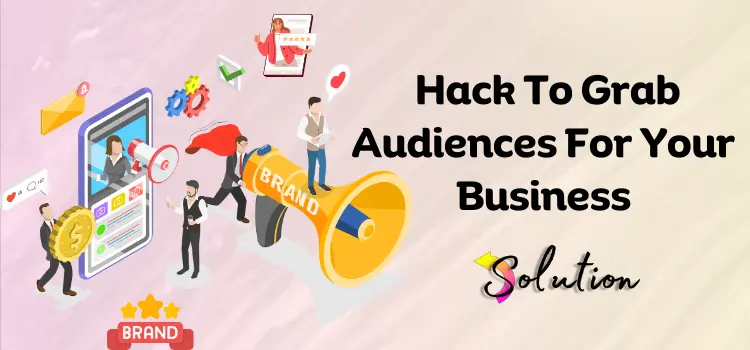
“Marketing is no longer about the stuff that you make, but about the stories you tell.”
― Seth Godin
Did you know that you only have the initial 5 seconds to capture your audience’s attention before they decide whether to continue engaging with your content?
And that time starts right when your story begins!
Tick-tock, tick-tock!
In a highly competitive world where every business is cluttered with many competitors and on the same side, the audience needs more time to check out all of their products and services. Storytelling plays a crucial role in grabbing those audiences.
Remember, human minds are not about what they want to see; it’s about what you show them and how captivatingly you play with their minds.
With the influencing power of words and a twist of visual elements, you can create a long-lasting impact on your audience and keep them coming back to learn more about your business.
It not only helps build interest in your business in the audience mindset, but it eventually reduces the marketing cost or yields better returns on investment.
Sounds crazy?
Right, but hold your horses for now.
Why You Can’t Bear the Loss of Ignoring the Power of Storytelling?
Don’t forget the first rule of business: If you can’t utilize the efficiency of any strategy, whether you spend money on it or not, you’re directly creating a loss.
That’s harsh, but that’s the reality.
You might not be investing a lot of money in storytelling, but by ignoring its power, you are directly imposing a huge lump sum loss on your head.
Confused?
Imagine yourself as a 5-year-old kid whose mom has told him to clean his room. Now, this kid has two options: either clean his room with proper dedication and get a reward (chocolate) from mom or get a slap for not doing the work.
In both scenarios, the child is responsible for cleaning, and if he demonstrates proper dedication, he will undoubtedly receive a reward. However, if he refuses to clean, he will receive a reward on his face for the entire day, after which he will be required to complete the cleaning task. 🙂
Understood?
If you carry out a task with proper dedication and strategy, you will surely be rewarded for the extra effort. In storytelling, the reward equalizes the effort put in by the character, creating a sense of fairness and satisfaction for the user.
Also Read:- Guide to Creating a Winning B2B Content Marketing Strategy
How to Apply the Art of Storytelling in Marketing?
Did you imagine storytelling as the old-school way of grabbing a mic and putting yourself in front of a camera?
No, no, no, no…..
It’s the 21st century, and today’s audience is more sophisticated and demanding than ever. They don’t want to see your face. Instead, they want to see your brand image as your face and have a long, detailed, and lovely conversation with it.
This is a chat filled with love, drama, comedy, and suspense that plays with their minds and keeps them emotionally connected.
Reality unleashed!
Storytelling is an art form that requires creativity, authenticity, and a deep understanding of your target audience, just like this blog, which targets your mindset. 🙂
Keep yourself in your target audience’s shoes. He or she may be seeing a lot of targeted ads or content every day that promotes a better product or service than yours. But is that what they really want?
When people see or watch something different, unique, and pleasing to their eyes and minds, their mindsets first become attracted.
Remember, what is beautiful to one person might be ugly to another. So, it totally depends on your storytelling skills and how you target and showcase them.
Storytelling is an inherent skill that can’t be learned in a day but requires daily practice—like this website has been doing for a long time. But yes, the good point is that mastering it is not as difficult a task as it may seem to be.
To effectively apply the art of storytelling to your marketing strategies, you can start:
- Understand your target audience and resonate with your story, depending on their interests. Don’t show them what you want to show; instead, show them what they are most likely to see.
- Play with their emotions. Craft a story that evokes their emotions, such as joy, empathy, or inspiration. It will leave a long-lasting impact on your story in their brain. And it’s what a marketer wants to do. (Thanks to us later!)
- Enhance your storytelling with compelling videos or infographics. These elements will add a visual touch to your artwork and make it easier for the audience to grasp the information more quickly.
- Don’t forget the call to action. But don’t dare to make it complex. Be realistic, and show them what you are offering. Be confident and highlight the benefits of your product or service.
- Grab customer feedback on a frequent basis. No one is perfect in the world. Neither we nor you. So, instead of making yourself flaw on the seventh floor, grab feedback from your audience on a regular basis. Use this feedback to improve your storytelling and marketing skills eventually. Remember, your motive is to effectively connect with your audience, not show off or impress them with unrealistic claims.
Also Read:- The Power of Digital Marketing
Real-Life Example of Creating Characters That the Audience Gives a Hit!
McDonalds – I’m Lovin’ it
One of the best brands known for its storytelling skills and ultimate level of marketing is McDonald’s. From a small burger stand to building thousands of outlets worldwide, storytelling has played a crucial role in McDonald’s success.
Remember the case when McDonald’s suffered a decline in sales due to negative publicity around their food quality?
The way McDonald’s deals with this situation, utilizing its storytelling skills in a campaign to highlight its commitment to quality ingredients and customer satisfaction, ultimately helps the brand turn negative publicity into a positive win. This not only helps the brand recover from losses, but eventually results in more mouth-to-mouth marketing of their food.
Consider the example, and understand that the time when McDonald’s used the art of storytelling to turn the market situation to their side was a major success for the company. They were already operating at a high level, and they bravely demonstrated the power of storytelling.
So, don’t underestimate the importance of storytelling; start learning and implementing it in your brand strategy. We hope that your brand will also gain huge success, just like McDonald’s did – we literally love it.
Conclusion
Storytelling in marketing is just like the use of sugar in tea. The perfect combination of both ingredients is sufficient to make your day brilliant. But don’t overuse it or never overhype it, as sometimes it can also play the role of lemon in milk—a spoiled marketing strategy.
By effectively harnessing the power of storytelling in marketing and turning things around, you can get one step ahead of your competitors and be the winning horse in the never-ending race. So, apply the power of storytelling right away and let the magic of marketing strategy shine throughout your financial reports and company strength.
Knock, knock! Get ready to smash the door to marketing success.


